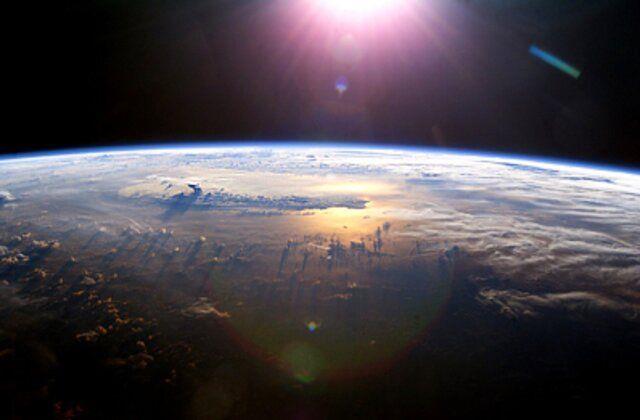
Scientists Warn Earth Is At Risk As Ozone Hole Reaches Record Size
The planet Earth, on which we live and which provides us with all the resources for life, is facing a serious threat. As there are different layers of the earth's surface, the ozone layer, which mainly protects it from the sun's ultraviolet (UV) rays, is considered one of the important elements.
Apart from being a curtain layer, the ozone layer also acts as a shield that protects the Earth from harmful rays that can enter from outer space. Recent studies by scientists show that a hole is forming in the ozone layer and that this hole is growing every time, increasing the risk of danger.
The hole's size variability is influenced by a strong wind band around Antarctica, a result of Earth's rotation and temperature differences. The band acts as a barrier, isolating air masses over polar latitudes.
Professor Parisa Ariya, an expert in chemistry and atmospheric and oceanic sciences at McGill University, told Turkiye's Anadolu how the substances catalytically destroy ozone, posing risks to human health and the environment.
Ariya said human-made emitted gaseous and halogenated molecules have caused a significant decrease in the ozone layer,“and thereby, the ozone layer's capability to filter the harsh radiation and expose us to stronger radiation with adverse health effects.”
In 1987, two years after the discovery of the ozone layer, heads of state and government gathered to sign the Montreal Protocol on Substances that Deplete the Ozone Layer, banning the use of chlorofluorocarbons (CFCs) -- chemicals that deplete the protective layer.
Despite the signing of the Montreal Protocol, Ariya insists that vigilance and updated protocols are imperative.
“We need to be more aware of these developments and have safeguards by evolving even further the original Montreal Protocol,” she said.
Ozone, also identified as a“greenhouse gas,” plays a crucial role in regulating climate by trapping heat, said Ariya.
Scientific advancements, including satellite technology and spectrometers, enable accurate monitoring of ozone levels.
Ariya reported steady recovery trends but urged continuous vigilance and observation to ensure sustained progress.
She emphasized that some of the halogenated compounds that are not yet banned and are used, for instance, in Asia, notably China, for agriculture and other purposes, are emitting and will have adverse effects on the planet and humans.
She stressed that several sustainable alternatives exist, however, vigilance is crucial to prevent the release of hazardous materials.
Ariya urged a drastic reduction in emissions affecting climate change, air quality and health.
To protect the ozone layer, Ariya urged targeted efforts in cities where a significant portion of pollutants is emitted. Advocacy for cleaner cities, sustainable transport and lifestyle changes are essential in reducing human effects.
Ariya stressed the importance of long-term protection by bringing stakeholders together.
“We must remain vigilant and observe for a long time to ensure it will steadily recover in the long term,” she said.“We also have to adjust the regulation appropriately with the change of emitters and other processes that are linked to ozone transformation in the future.”
Legal Disclaimer:
MENAFN provides the information “as is” without warranty of any kind. We do not accept any responsibility or liability for the accuracy, content, images, videos, licenses, completeness, legality, or reliability of the information contained in this article. If you have any complaints or copyright issues related to this article, kindly contact the provider above.






















Comments
No comment